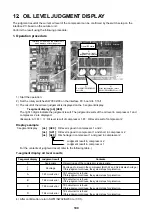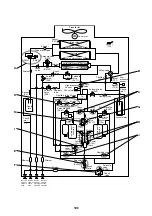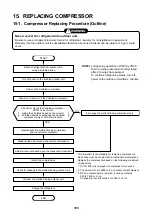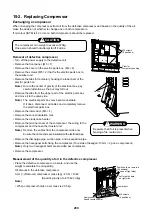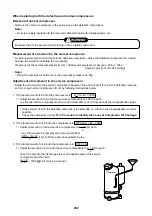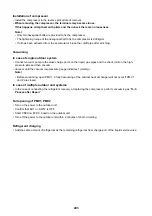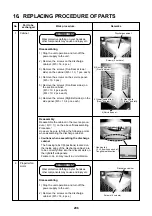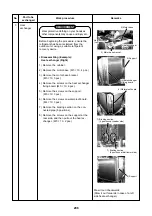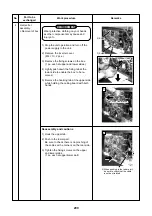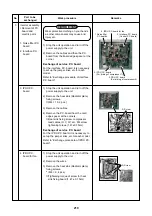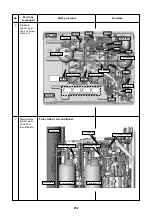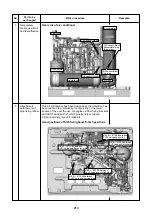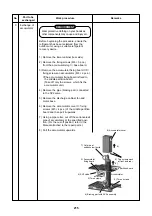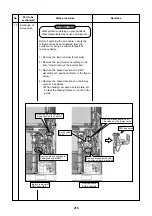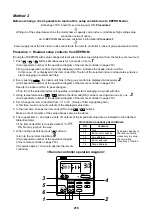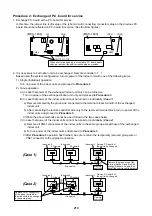
204
YES
YES
NO
NO
Check oil-equalization circuit in the following procedure
once the compressor is removed.
Correct miscabling or incorrect
installation of the sensors:
TK1: CN514/TK2: CN515
TK3: CN516/TK4: CN523
Sensor error
®
Exchange
Is there any disconnection, mis-cabling,
or incorrect installation of sensors on the unit
of which the compressor has been replaced?
Are the sensor characteristics of
TK1, TK2, TK3 and TK4 sensors correct?
15-3. Procedure to Identify the Cause of Compressor Oil Shortage
Check items and procedure for the oil-equalization circuit under when the compressor has
been removed
Check for
refrigerant
stagnation in
compressor
Check for oil
shortage in
compressor
Check items
Outdoor PMV1, 2, 3
leakage
Check valve leakage
on main discharge pipe
Check valve leakage of
discharge pipe
Check valve leakage of
oil-equalization circuit
SV3A valve leakage
SV3B valve clogging
SV3E valve clogging.
Clogging of oil-return
capillary
SV3D valve capillary
clogging.
Clogging of oil-return
capillary
Position
A
B
C
D
E
F
G
H
I
H
Procedure
1) Pressurize with nitrogen through check joint of liquid pipe and check for
pressure at check joint of discharge pipe.
If pressure of check joint of discharge pipe is high, leakage from outdoor
PMV 1,2, 3 and check valve of main discharge pipe are possible.
Exchange the parts.
2) If the pressure cannot be found, open outdoor PMV 1,2,3 fully and recheck
pressure.
If the pressure from the discharge check joint is high, leakage from check
valve of main discharge pipe is possible. Exchange the parts.
3) If gas leaks from the brazed discharge pipe where compressor has been
removed, when pressurized with nitrogen from the check joint of the main
discharge pipes, the discharge pipe check valves is possibly leaking.
Exchange the parts.
4) If gas leaks from the brazed oil-equalization pipe where compressor has
been removed, when pressurized with nitrogen from the check joint of the
discharge pipe, the check valve of oil-equalization circuit is a possibly
leaking. Exchange the parts.
5) Pressurize with nitrogen with the check joint on the discharge pipe then open
SV3B valve manually.
If gas leaks from the brazed suction pipe where the compressor should be,
there may be a leak in SV3A valve. Exchange the parts.
6) Open SV3E valve manually while pressurizing with nitrogen using the check
joint on the discharge pipe.
If there is no leakage at the brazed suction pipe where the compressor was
removed, the SV3E valve or oil return capillary may be clogged.
Exchange the parts.
7) Open SV3E valve manually while pressurizing with nitrogen from the check
joint of the discharge pipe.
If there is no leakage at the brazed suction pipe where the compressor was
removed, the SV3D valve/capillary or oil return capillary may be clogged.
Exchange the parts.

